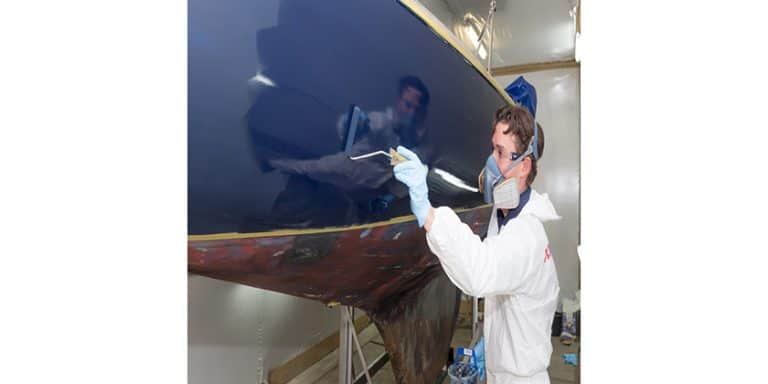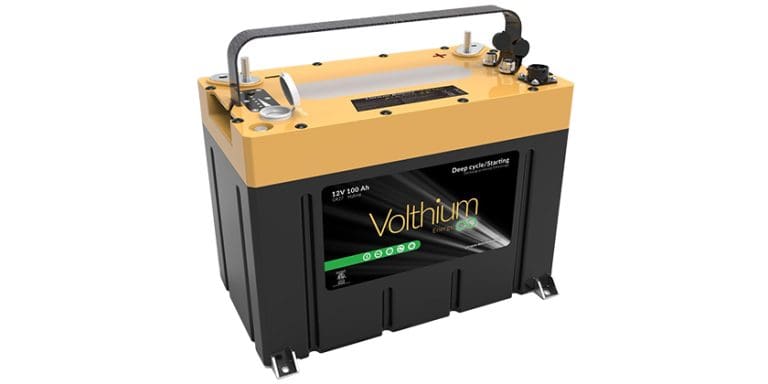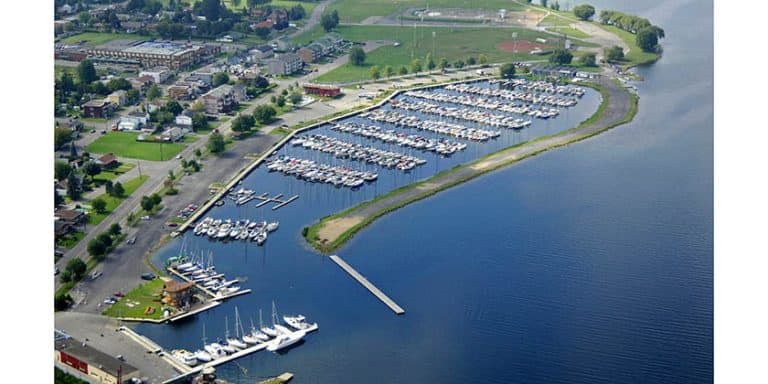Winterizing – Made Simple with Marc’s List
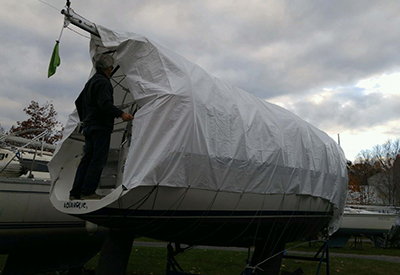
Oct 27, 2022
by Marc Robic
Last fall, a few members at my yacht club walked over and joined the exchange, which, by the way, is one of the great benefits and pleasures of being part of a yacht club or marina.
It was clear that a variety of techniques are used to perform the same task. However, some, in my opinion, use effective methods while others use, somewhat ineffective even bizarre methods, making their process much more complicated than need be.
My maxim has always been to work smart not hard. An objective made even easier when dealing with a “to do lists” that essentially repeats itself every year, whether it is for spring or fall preparation.
To avoid confusion, for every boat I’ve owned, I created separate spring and fall check-lists, making sure each task is listed in the proper sequence to avoid having to redo a task that was done, albeit too fast.
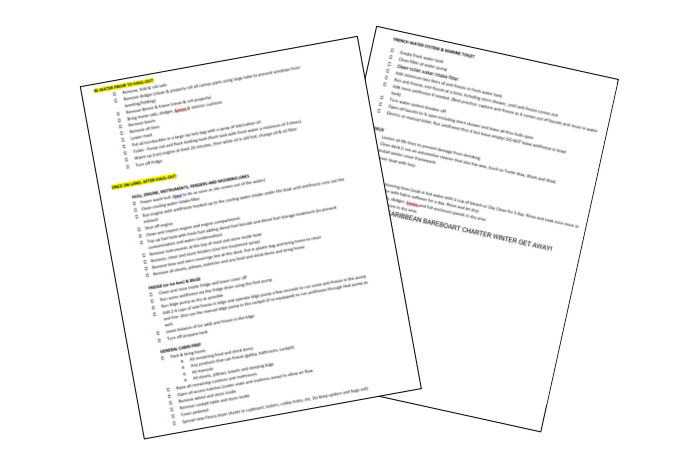
So, I thought I’d share my current “check-list” and how I perform each of these tasks. From preparations while still in the water to preparations once she’s out and sitting pretty on her cradle. Yes, my boat identifies herself as a her/she. I say “current” list because as soon as I add or change something that is required for winter and/or spring preparation, I immediately update my check-lists. I do hope many of you will find this information and list useful.
If you would like an electronic version of my lists, please email me and I will send it to you. You’ll be able to edit it for your specific boat and needs. BTW, most of the list can be applied to both sail and power boats.
This “list” basically starts while the boat is still in the water and takes you through steps to follow once she’s on her cradle or trailer.
The only important exception to my list is for those with outboard(s). If this is the case, before haul out, you must disconnect the fuel line(s) and let the outboard(s) run dry. Plus, just to be on the safe side, crack it a few times to make sure all the fuel has been spent. This helps maintain your carburetor, injectors and fuel passages much cleaner and reduce any problems come spring time. If you’re in salt water, don’t forget to run fresh water thru the water intake to rinse the engine well before you run the engine dry.
It is also important to make sure you have pumped out and rinsed (multiple time) the toilet holding tank before haul-out. I add antifreeze in the tank by flushing antifreeze via the toilet itself, but never leave antifreeze in the bowl. Antifreeze will prematurely damage your toilet components such as pump seals.
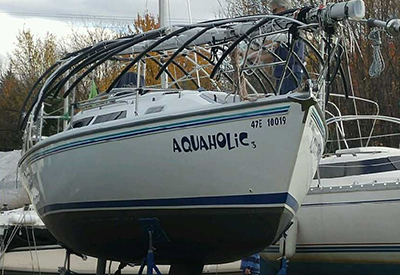 WINTERIZING TO DO LIST
WINTERIZING TO DO LIST
The following list is in the order I actually undertake these tasks. Winterizing the fresh water system is one of the last things I do before covering the boat. Because I use water to clean and rinse various things in the cabin, winterizing that system last is convenient.
About batteries. Because my solar panels are always keeping my batteries charged and warm, I leave my batteries onboard. I do keep the battery switch set to “both” in order ta maintain a good balance between both batteries. If you have a solar charging system or can plug in a trickle charger, like a Battery Minder, all winter, that will work as well.
If not, batteries should be removed and stored at home in a warm dry place. Make sure to check and keep them charged up as needed during the winter.
IN WATER PRIOR TO HAUL-OUT:
Remove & fold sails
Remove dodger (clean & properly roll all canvas parts using large tube to prevent windows from bending/folding)
Remove Bimini & frame (clean & roll properly)
Bring home sails, dodger, bimini, sails & interior cushions
Remove boom
Remove all lines
Lower mast
Put all turnbuckles in a large zip lock bag with a spray of lubrication oil
Empty and flush toilet and holding tank (flush tank with fresh water a minimum of 3 times)
Warm up engine then, change oil & filter
Turn off fridge.
ONCE ON LAND, AFTER HAUL-OUT: HULL, ENGINE & INSTRUMENTS
Power wash hull. (best to do as soon as she comes out of the water)
Clean engine water intake filter
Run engine with antifreeze hooked up to the water intake under the boat until antifreeze runs out the exhaust
Shut off engine
Clean and inspect engine and engine compartment.
Top up fuel tank with fresh fuel adding fuel biocide and diesel fuel storage treatment (to prevent contamination as well as water from condensation)
Remove instruments at the top of mast and store inside boat
Remove, clean and store fenders
FRIDGE (or ice box) & BILGE
Clean and rinse inside fridge and leave cover off
Run some antifreeze via the fridge drain using the foot pump
Run bilge pump as dry as possible
Add 2-4 cups of anti-freeze in bilge and operate bilge pump a few seconds to run some anti-freeze in the pump and line. Also use the manual bilge pump in the cockpit (if so equipped) to run antifreeze through that pump as well.
Leave balance of (or add) anti freeze in the bilge
GENERAL CABIN PREP
Pack & bring home:
o All remaining food items
o Any products that can freeze (galley, bathroom, cockpit)
o All manuals
o All mooring lines
Raise all remaining cushions and mattresses
Open all accesses (under seats and mattresses areas) to allow air flow
Remove wheel and store inside
Remove cockpit table and store inside
Cover pedestal
Spread new Fleecy dryer sheets in cupboard, lockers, cubby holes, etc. (to keep spiders and bugs out)
FRENCH WATER SYSTEM & MARINE TOILET
Empty fresh water tank
Clean filter at water pump
Add minimum two liters of anti-freeze in fresh water tank.
Run anti-freeze one faucet at a time, including stern shower, until anti-freeze comes out.
Add more antifreeze if needed. (Best practice: capture anti-freeze as it comes out of faucets and reuse in water tank)
Turn water system breaker off
Open all faucets to ¾ open including stern shower and leave all thru hulls open
Electric or manual toilet: Run antifreeze thru it but leave empty! DO NOT ADD antifreeze in bowl
DECK
Clean deck (I use an automotive cleaner that also has wax)
Install winter cover framework
Cover boat with tarp
AT HOME
Store sails inside in a dry area.
Clean mooring lines (soak in hot water with 1 cup of bleach for 1 day. Rinse and soak once more in hot water with fabric softener for a day. Rinse and let dry)
Store sails, dodger, bimini and full enclosure panels in dry area (with sails)
BOOK CARIBBEAN BAREBOART CHARTER WINTER GET AWAY!
If you would like a copy of Marc’s Winter Check list, email him directly!
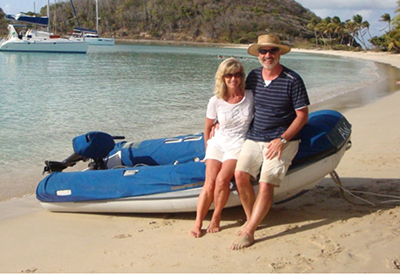 Marc Robic
Marc Robic
mrobic@aol.com
INFORMATION about the writer:
Marc is a member of the Canadian Power & Sail Squadron. He and his wife, Claude Couture sail their Catalina 270, Aquaholic 3, out of the Ile-Perrot Yacht Club in Montreal, where Marc spent 16 years as Harbour Master. They are regular Caribbean bareboat yacht charterers. With over 40-years experience, Marc is also an avid onboard do-it-yourselfer.
Marc Robic & his First Mate, Claude in Salt Whistle Bay in the Grenadines




